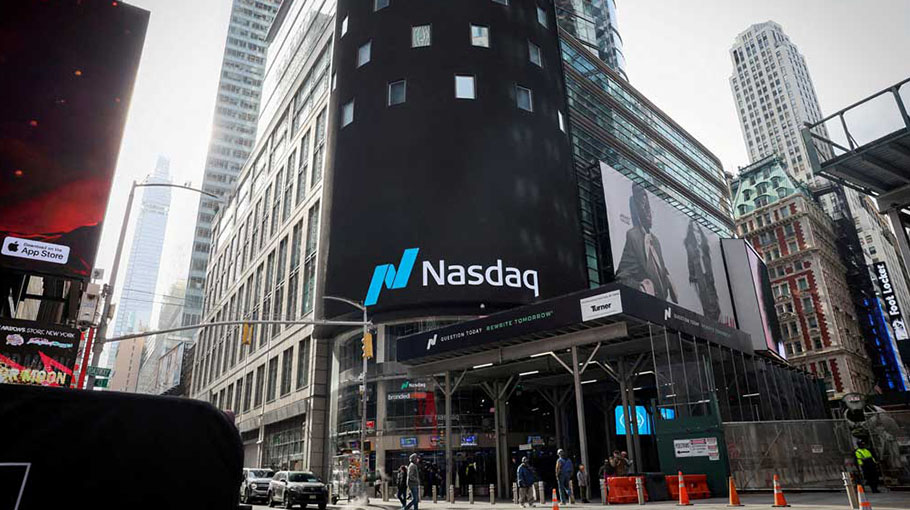Tech-heavy Nasdaq in correction as equity selloff deepens

Worries over tech earnings and a slowing US economy slammed the Nasdaq Composite index on Friday as it extended recent declines to fall 10% below its record high, confirming it was in correction territory.
The tech-heavy index fell 2.4% on Friday after a softer-than-expected jobs report spurred worries over whether the Federal Reserve will need to deliver hefty interest rate cuts at its next meeting to prevent the US economy from falling into recession. Disappointing earnings from Amazon AMZN.O and Intel INTC.O also have spooked investors.
The Nasdaq has dropped 10% from its record close of 18,647.45 points on Jul 10. An index or stock is widely considered to be in a correction when it closes 10% or more below its previous record closing high.
"This is an old-fashioned correction going on," said Tom Plumb, chief executive and portfolio manager at Plumb Funds. "We passed the economic torch from the perception of growth to the perception of needing government intervention with lower interest rates to stabilize the economy."
Over the past 44 years, the index has slipped into correction territory after hitting a new high 24 times, or about once every two years, according to a Reuters analysis of LSEG data. In two-thirds of these cases, the index traded higher a month after entering correction territory, data showed.
The last time the index marked a correction after scaling a new high was on Jan 19, 2022. The index then extended losses to fall 36% from its high before bottoming out in December of that year.
The Nasdaq is still up 11.8% year-to-date. The S&P 500 .SPX, which has lost about 6% from its high, is up 12.1% for the year.
The Nasdaq's tumble comes as investors turn more wary of the highly valued tech stocks that have led the charge higher for most of the year, driven by excitement over the potential of artificial intelligence.
Stocks are also heading into what is typically a seasonally rocky period.
September and October tend to be volatile months for US shares. The Cboe Volatility index .VIX - Wall Street's most watched gauge of investor anxiety - averages 21.8 in October, the highest for any month, according to LSEG data going back to 1992.
"This isn't an unusual seasonality pattern. We had a similar selloff in August 2023, although perhaps this is more forceful," said James St. Aubin, chief investment officer at Ocean Park Asset Management.
"I would look at this as the correction a lot of people were expecting to see coming into the summer. All kinds of things are piling on top of each other to make the market nervous," St. Aubin added.




